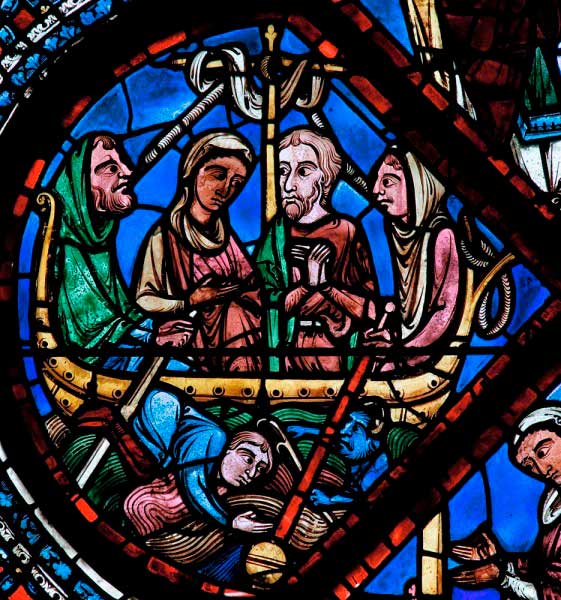To the questions that reach the rectorate of the cathedral – especially through the guides of the Visitor Service – we sometimes answer in images. The subjects are varied and sometimes highlight unsuspected aspects of the cathedral…
Passionate (at the same time) about boating and stained-glass windows, I naturally asked myself a question to which the astonishing database represented by the cathedral’s stained-glass windows may provide some answers: what did the sterns and bows of boats look like around 1200?
Your question is an interesting one, as it shows just how comprehensive the cathedral is as a source of information on medieval techniques.
In reality, the flat-bottomed craft of the 1200s has no “direction”, as it was not shaped to provide a bow to facilitate water penetration. In other words, stern and bow are one and the same.
There are around twenty-five representations of boats. In most cases, if you can distinguish the two ends, one ends in a simple girder, while the second takes the form of a “fork”. On closer inspection, this fork is used to wind ropes: it’s most likely the storage place for the ship’s mooring lines. There are also a few variations, no doubt inspired by Scandinavian ships: several spiral-shaped windings and, above all, various monstrous animal figures.
These details seem to correspond to the ships built in the 1200s, although we must always be cautious about how much “novelty” the master glassmakers accept: their models are essentially stereotypes, like a child drawing a steam train past the year 2000.
Unless, of course, they are regular users. Glassmakers, it should be remembered, are travelers…














